One our favorite experiences when visiting Japan was staying in a traditional Japanese ryokan near Jigokudani snow monkey park. If you are planning a trip to Japan and wondering if you should stay at a ryokan, here are a few things you need to know.
What is a ryokan?
A ryokan is a traditional Japanese inn. Typical features of a traditional Japanese ryokan include futon beds, low tables, paper walls, sliding doors, straw tatami mats on the floor, minimalist decor and communal baths. While ryokan tend to be more expensive than Western style hotels there are ryokan for all budgets and prices. Some ryokan are very authentic and traditional, while other ryokan offer modern touches and amenities such as TV, wi-fi and even western beds. Ryokan can be found all over Japan but they tend to be more common in onsen towns (towns with natural hot springs).
What to expect when staying in ryokan
Below is a guide to what to expect when staying in a traditional Japanese ryokan. Some ryokan are more modern so your stay might differ somewhat from the traditional Japanese ryokan experience.
Sleeping on a futon on the floor
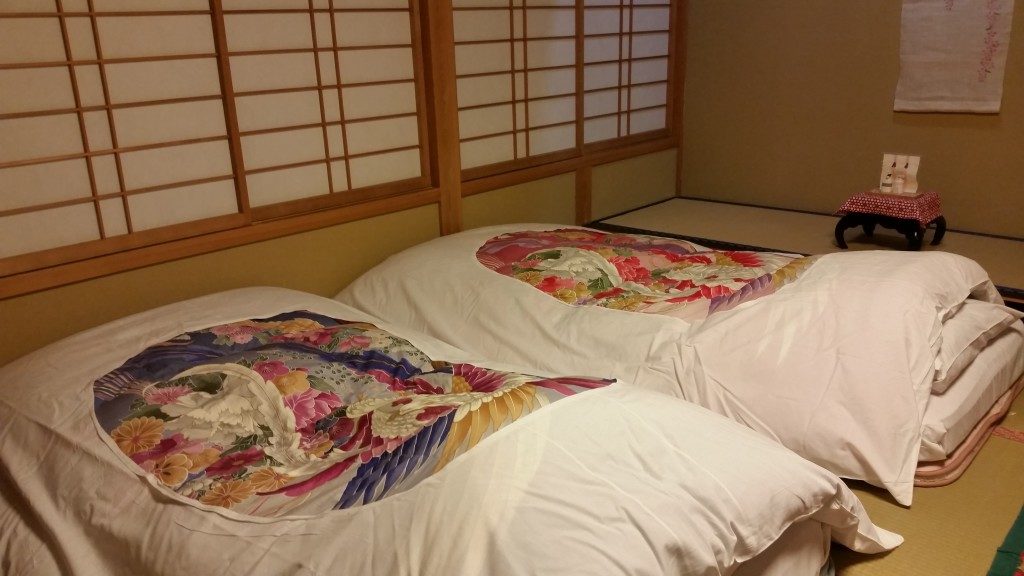
One of the main features of a traditional ryokan is that guests sleep on a futon mattress on the floor rather than a bed. Every morning the staff places the futons back in the closet and the futons are put out and made again while you are eating dinner. We found the futons very comfortable, for us the biggest adjustment was not having a bed to take a nap during the day.
If sleeping on a futon on the floor is an issue, some modern ryokan have Western style rooms with beds.
Wearing a yukata
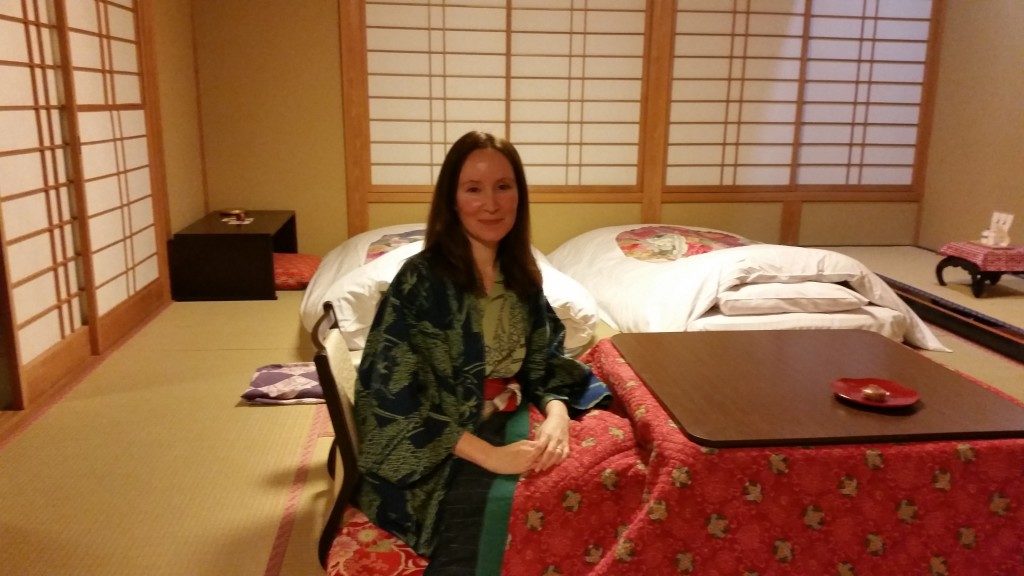
You will be lent a yukata to wear while staying at a ryokan (and possibly a jacket if it is cold). Yukatas are traditional Japanese robes usually made out of cotton. The yukata is meant to be worn at the ryokan including in the room, while having dinner or when going to take a bath. Many guests even wear the yukata outside when walking around onsen towns but it is not common to wear it walking around Tokyo or Kyoto.
There is a specific way to wear the yukata – left side on top over the right side before tying the obi (belt) – see this website for detailed instructions.
Breakfast and dinner is usually included in the rate
Ryokan usually include breakfast and dinner in their price which is one of the reasons they are typically more expensive that Western style hotels.
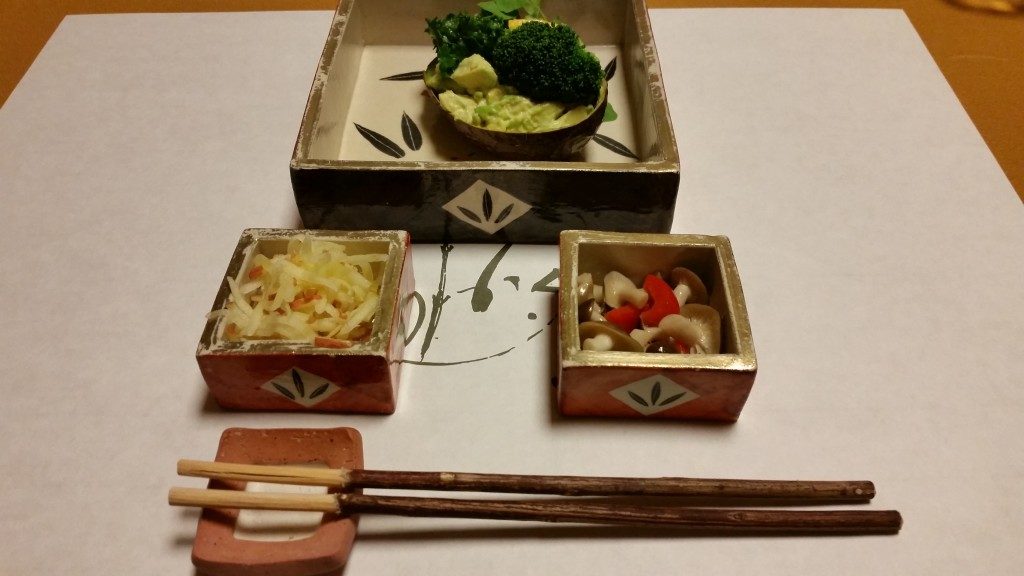
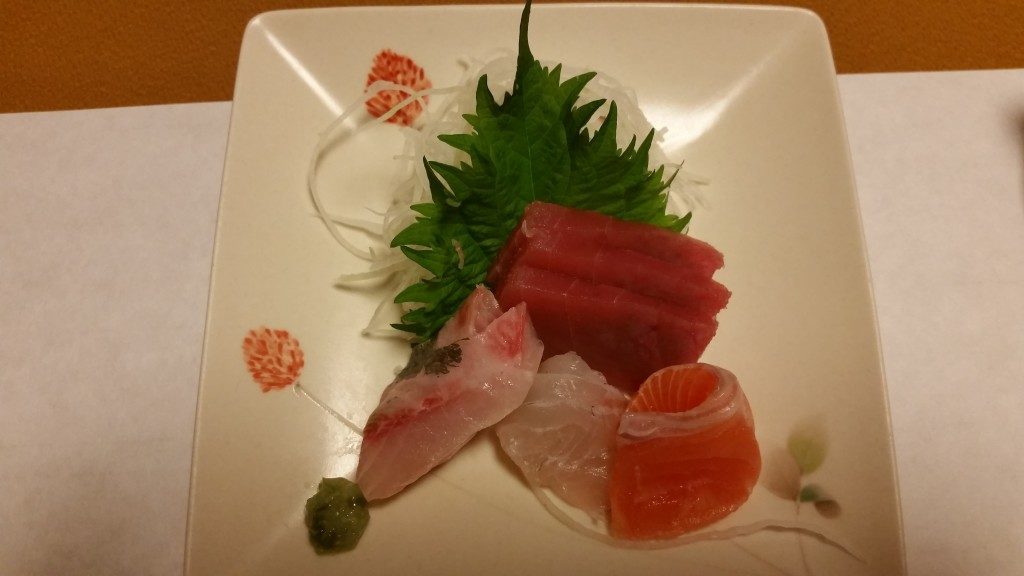
Dinners usually are kaiseki ryori (traditional Japanese multi-course haute cuisine) usually prepared with seasonal and locally sourced ingredients and beautifully presented. Since dinner consists of multiple courses, you can expect that it will take you a long time to eat.
You are not given a choice of dishes or place an order with what you want to eat, the menu is planned ahead of time and varies each day. If you don’t like one of the courses you can probably skip it or only take a few bites, but it is polite to eat most of the food. Since meals take a lot of preparation, if you have dietary restrictions inform the ryokan ahead of time.
Breakfast/dinner is usually served either in your room or in a separate dining room. It is important to be on time for dinner (the ryokan will either set a time or get your feedback on the time dinner will be served).
Soaking in a onsen
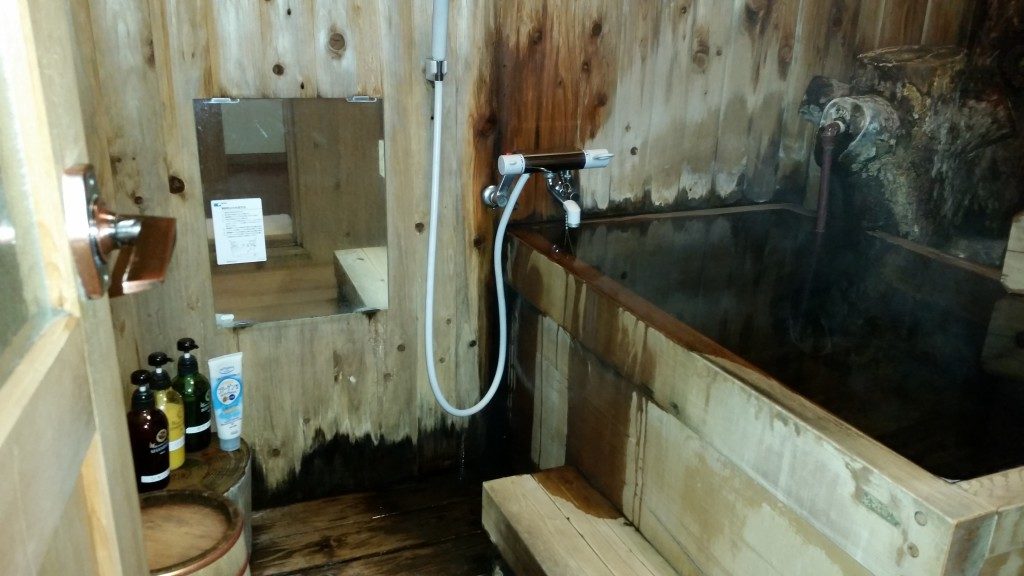
Our room had a private onsen
Ryokan are famous for having shared onsen (Japanese hot spring baths). Onsen are typically communal and gender segregated. It is typical to switch the genders throughout the day so that both genders can use each onsen. You are expected to bathe in the nude and are not allowed to wear bathing suits or anything else while in the water. For those that are modest and want more privacy, some luxury ryokan offer private onsen in addition to the shared onsen.
There is certain rules to follow when using an onsen (more on this later). Beware that the water is very hot!
Limited check in and check out times
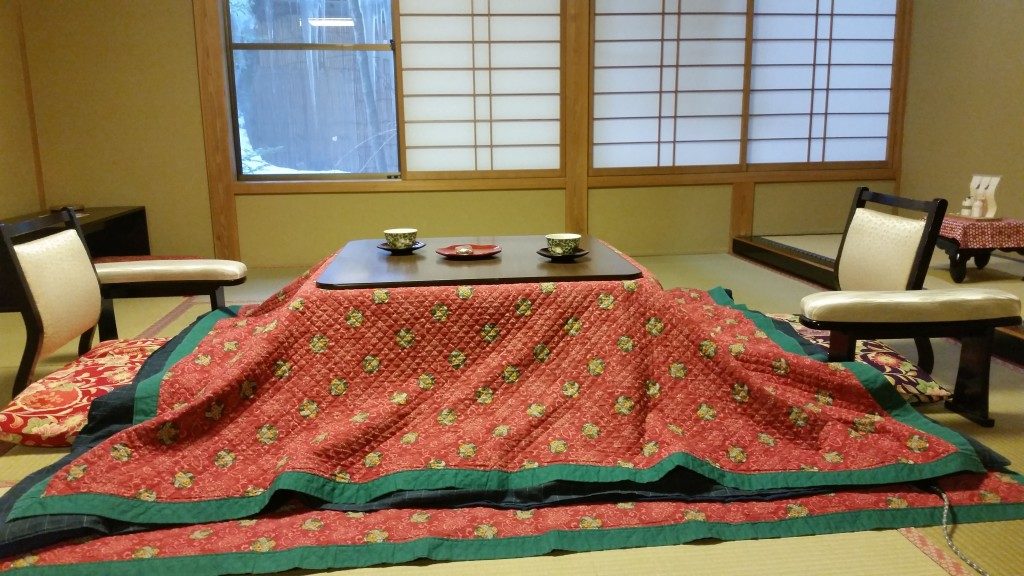
Ryokan typically have more limited check in and check out times so it is hard to get early check in or late checkout like you might in a hotel.
Guests are expected to check in mid afternoon (usually between 3 and 6 pm). After you check into a ryokan, you will typically be served tea and Japanese sweets. Guests are also expected to check out in the morning (usually by 10 am) so that the rooms can be cleaned and prepared for the new guests.
Ryokan rules and etiquette
There is certain etiquette you are expected to follow when staying in a ryokan. These rules were explained to us by our hostess but in case you forget here are some things to keep in mind.
No shoes inside the ryokan
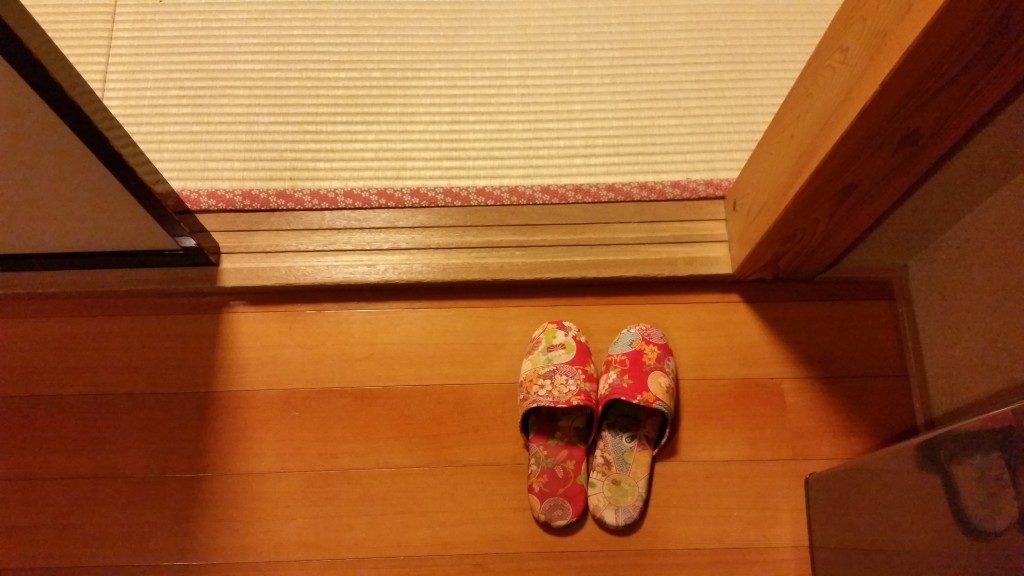
Just like when entering a Japanese home, guests are asked to remove their shoes prior to entering a ryokan and wear slippers. You will usually see shoes and slippers at the entrance so it will be self explanatory where to leave your shoes. In addition to slippers you might also be provided with wooden sandals (geta) for walking around outdoors.
Slipper etiquette
While you are expected to wear slippers rather that shoes inside the ryokan, slippers are not allowed on the tatami mats because they are delicate. (Don’t roll your luggage on the tatami mats either).
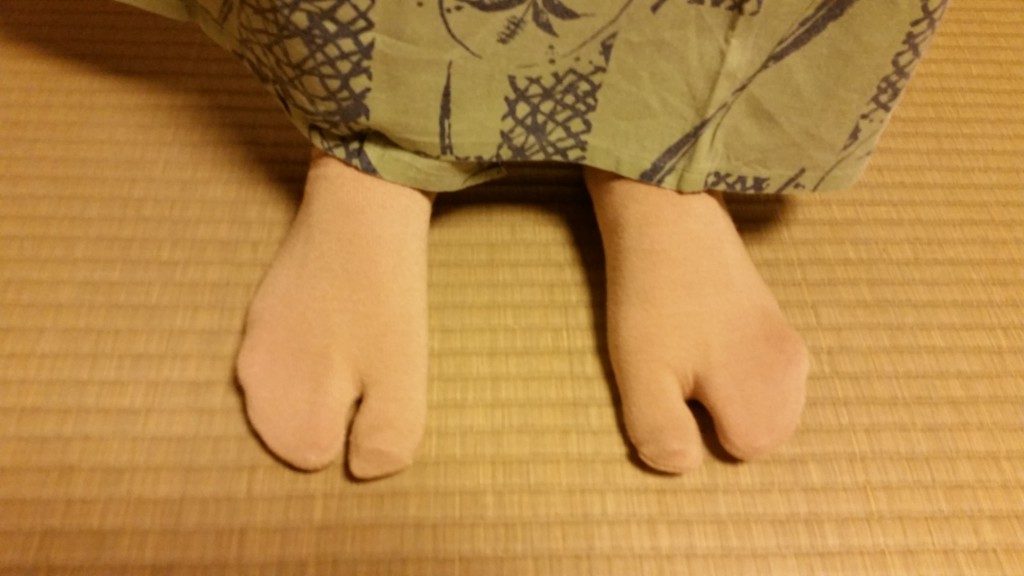
In addition to slippers for walking around, you will also encounter separate bathroom slippers for use only in the bathroom.
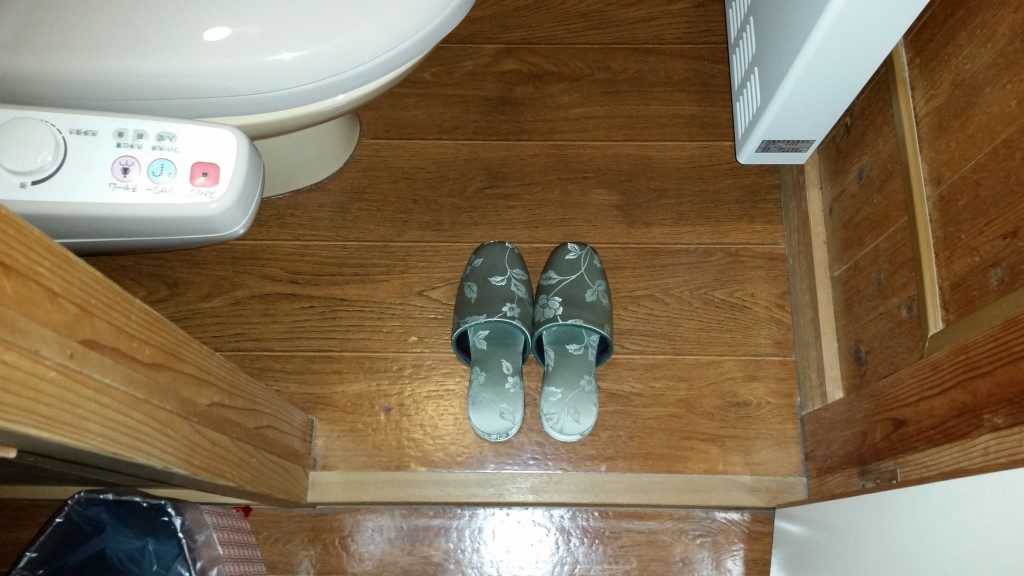
When using the bathroom you are expected to take off your slippers and step into the bathroom slippers found in the bathroom. Before leaving the bathroom take the bathroom slippers off and switch back to your regular slippers. Make sure not to step on the bathroom floor when switching or walk out in the bathroom slippers as the Japanese consider bathroom floors very unclean.
Onsen rules and etiquette
A big part of the ryokan experience are the communal onsen baths. When using a Japanese onsen there are certain rules to keep in mind.
Onsen are meant for soaking and not for cleaning yourself. You are expected to clean yourself in the washing area before entering the onsen and not use soap or shampoo in the onsen. While you will be given a large towel to dry and a small towel, you should make sure towels do not touch the water. You are not allowed to wear bathing suits, robes, towels or anything else while in the water.
Some public onsen do not allow people with tattoos (tattoos have been historically taboo in Japan as they are associated with criminal gangs). You might be able to get away with covering up your tattoo with a waterproof bandage or hiding it with your small towel before quickly getting in the water. If there is no way to hide your tattoos, some ryokan offer private onsen in addition to shared onsen.
Summary of the ryokan experience
We definitely recommend anyone visiting Japan stay in a traditional Japanese ryokan at least for a night or two – not only is it an interesting cultural experience but you can enjoy excellent Japanese hospitality as well as seasonal local Japanese food.
Traveling to Japan soon? Read our Guide to Planning a Trip to Japan to help you plan and prepare for your first trip to Japan.
—————–
Like this post? Save it to Pinterest!
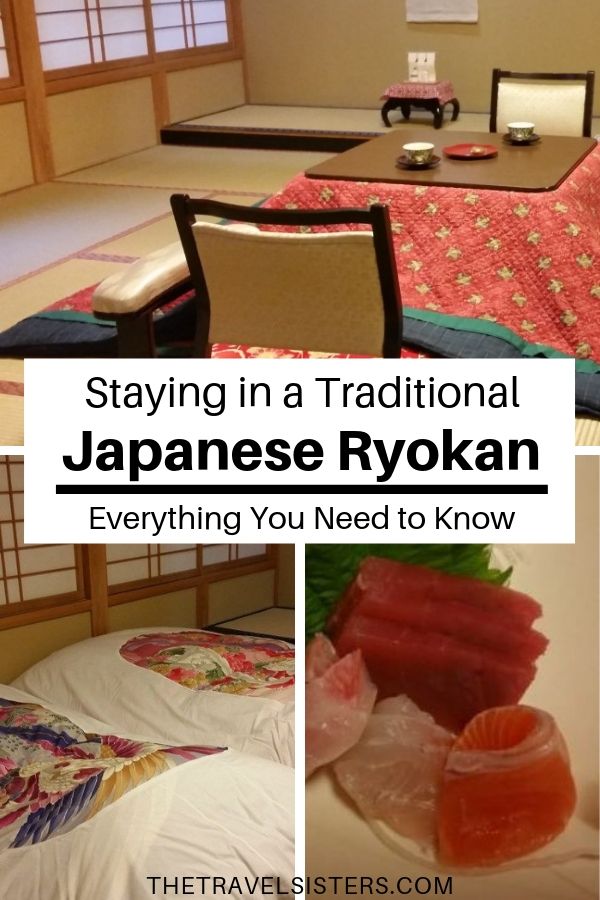
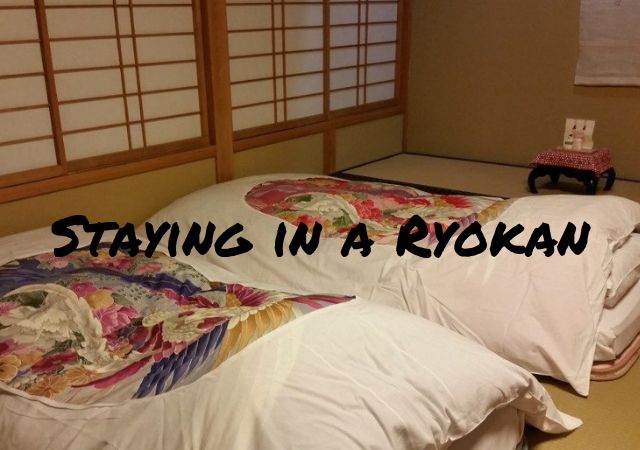


When in Japan I would love to stay in a ryokan. I’ve heard of ryokans a lot and I’m really interested in staying there mostly because of the onsen bath facility that you get there. You have nicely detailed about the do’s and dont’s and also made us aware of your wonderful experience. Thanks for the share.
My husband and I just got back from our first trip to Japan. Staying in a ryokan was my favorite experience by far during our trip. We had been running around like crazy sightseeing, so it was wonderful to take a day to just relax, soak in the onsen, have some nice long meals, and recharge our batteries. I used this site to search for and book our ryokan: https://www.japaneseguesthouses.com/. A lot of ryokan do not have English websites or online booking, so this website was very helpful!
I have read so much about staying in a Ryokan in Japan. I really wish to experience the traditional environment.
This was so interesting! Thanks for the tips. If I ever go to Japan, I will hopefully get the opportunity to stay in a Ryokan (: